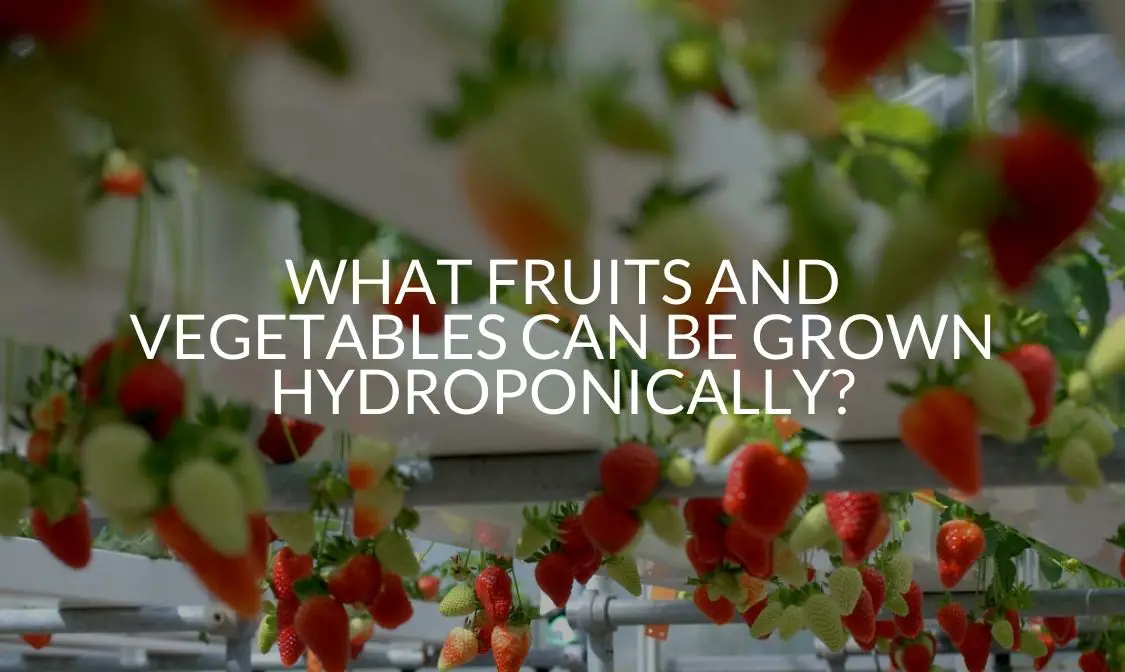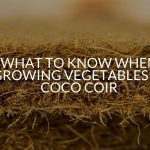Fruits like strawberries, blueberries, and raspberries are ideal for growing hydroponically. Vegetables such as lettuce, bell peppers, celery, and string beans are also suitable for growing hydroponically.
Produce that have more extensive roots, such as carrots and radishes, tend to not do so well in a hydroponic garden due to them needing soil and a large amount of space for their root systems to grow correctly.
Below we will go over what fruit and vegetables can be grown hydroponically and how to take care of them to produce excellent yields all year long.
What Fruit and Vegetables Can Be Grown Hydroponically?
Strawberries
Strawberries are one of the most popular commercially grown plants. They are beginner-friendly as they are effortless to grow.
They flourish best under the ebb and flow hydroponic setup or the nutrient film technique (NFT), and they prefer warm temperatures ranging between 60°F to 80°F.
The ideal pH for this delicious summer fruit is between pH 5.5 to 6.2. and they need 8-10 hours of direct sunlight.
Before you get started, you need to know which types of hydroponic strawberries are best to grow:
- Seascape: Good size fruit with a sweet flavor
- Tribute: Produces medium-to-large berries
- Quinault: Produces medium-sized berries and are highly self-pollinating
It typically takes about four months after planting your strawberry seeds to harvest.
Blueberries
Blueberries typically aren’t someone’s first choice to grow fruits hydroponically due to them not producing any fruit until the second year of growth.
Even though they don’t produce anything until their second year, their bushes last longer and don’t need to be replanted each year.
Blueberries tend to do well in warmer climates, and they favor a pH between 4.5-6.0. Blueberries need 12 to 16 hours of light daily, and they do best when grown in the Nutrient Film Technique.
They are usually grown in an NFT system. Unfortunately, it’s hard to plant blueberries from seeds, so transplants are recommended.
Sulfur is an essential nutrient to blueberries, and they require more than 80 ppm of sulfur to grow correctly. You can provide your blueberries with an adequate amount of sulfur through sulfur prills.
Raspberries
If you are considering growing raspberries hydroponically, it is essential to know that there are two main types of raspberries:
- Floricane
- Primocane
The difference between the two is that the primocane variety types bear fruit more in the fall, and floricanes produce more in the summer.
Primocane-type raspberries are the better option for a hydroponic system as they provide a higher yield of fruit throughout the year, and they require less space than floricane raspberries.
They grow best in the drip hydroponic system, and raspberry transplants are recommended over starting with seeds because they are so much easier to grow.
Primocane raspberries require at least 12 hours of light daily, room temperatures between 71°F-75°F, and a pH balance between 5.8-6.5.
You will be able to harvest your plant within about four months.
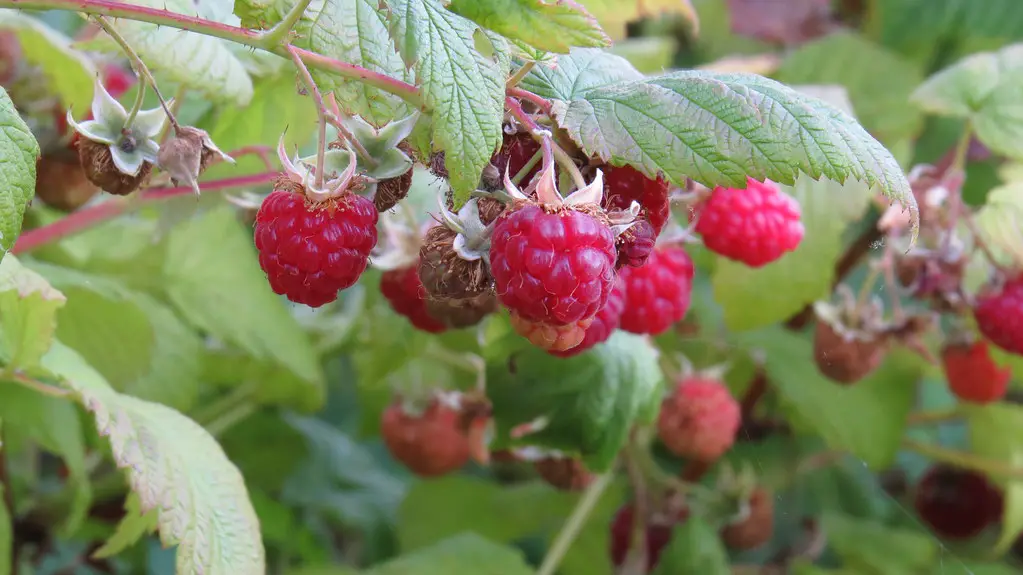
What Vegetables Can Be Grown Hydroponically?
Lettuce
Lettuces are best suited to be grown hydroponically, and they are great for beginners since they grow fast and are easy to maintain.
Popular varieties of lettuce that you can grow are:
- Romaine
- Buttercrunch
- Iceberg
Lettuce prefers to grow with high nitrogen levels, 10-14 hours of light per day, cooler temperatures between about 50-70°F, and a pH balance of 6.0-7.0. Any hydroponic system works to grow lettuce but they do better in NFT and Ebb and Flow.
To have healthy growth, the recommended EC is 0.8-1.2, and the recommended PPM is 560-840. You will be able to harvest your lettuce within three-eight weeks.
Tomatoes
Botanically, tomatoes are considered fruit but many consumers and farmers consider a vegetable.
Tomato plants like the heat and do best in 60–90º F temperatures, an EC of 2.0–5.0, PPM of 1400-3500, and pH range of 5.5-6.5.
The Ebb and Flow hydroponic system setup is best for growing tomatoes, and it is ideal to have your plant exposed to at least 8-10 hours of sunlight.
Harvest time for your tomatoes is about 45-70 days.
Artichoke
Artichokes are great to grow hydroponically with the ebb and flow system set up. However, they require about 12-14 hours of sunlight and prefer to be developed in temperatures between 50-75°F.
To grow properly, their EC needs to be 08-1.8, PPM of 560-1260, and pH level of 6.5-7.5. Artichokes have a longer growing season of about 150 days until they are ready to harvest.
Cucumbers
Cucumbers can do well in an ebb and flow hydroponic system.
When grown properly, they will bring high and consistent yields. However, to get the results you desire, your cucumbers require warm temperatures between 75°F and 85°F and 10-12 hours of sunlight.
Types of cucumbers that you can grow are:
- Seedless European cucumbers
- Lebanese cucumbers
- American sliders
Remember to maintain their pH levels between 8.0-6.0, EC of 1.7-2.5, and PPM of 1190-1750. These cucumbers are usually ready to harvest within 70 days.
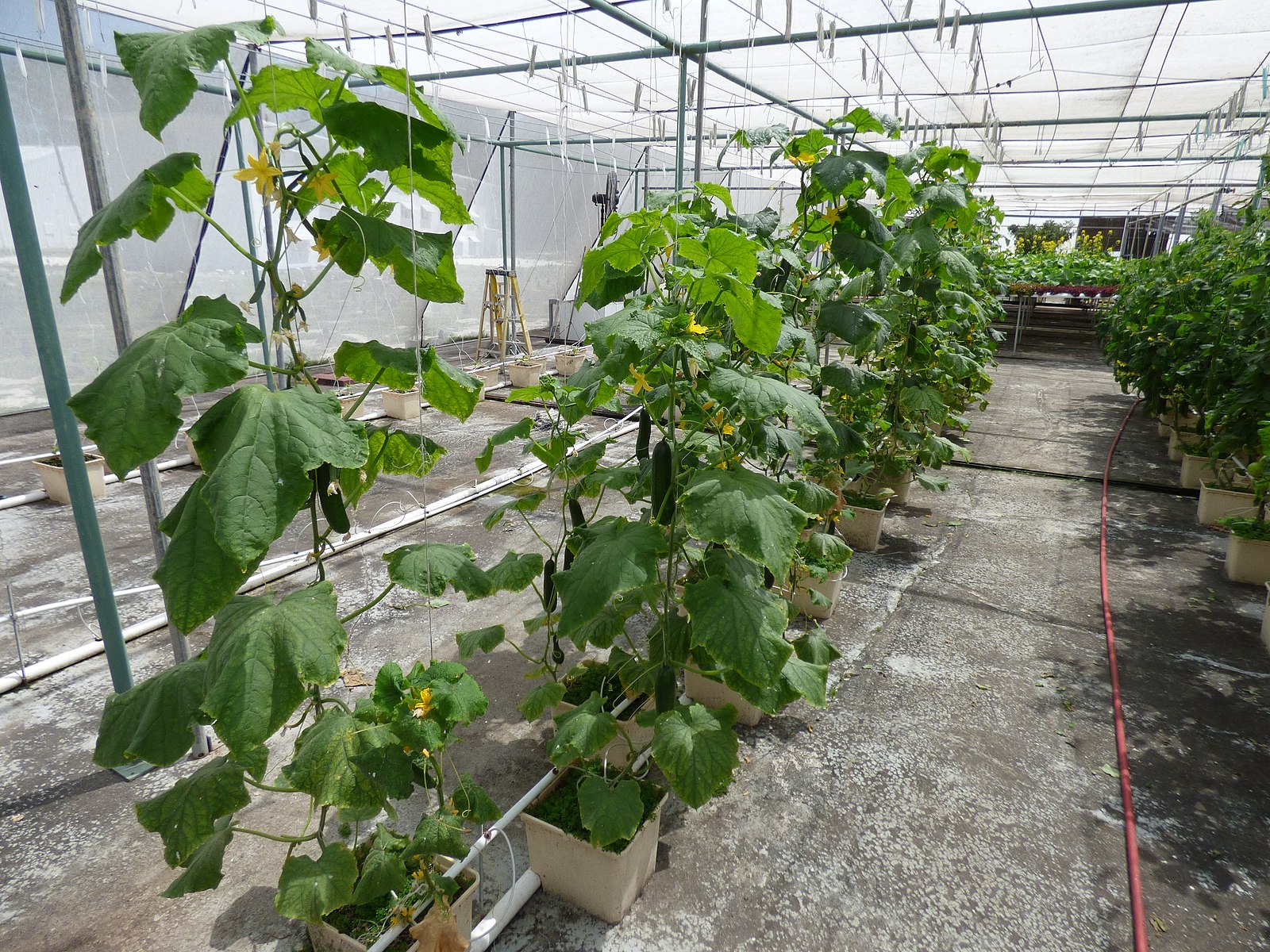
Spinach
Under well managed growing environment, your spinach can quickly yield a significant amount to harvest. However, spinach prefers to be in an environment with a pH level of 6.0-7.0, EC of 1.8, and PPM of 1260-1610.
Unlike the other mentioned vegetables, they don’t require a lot of sunlight. They only need about 6 hours of daylight and temperatures of about 65 degrees F and 72 degrees.
The variety of Spinaches you can grow are:
- Bloomsdale
- Smooth Leafed
- Red Cardinal
Spinach will grow quickly when placed in a Nutrient Film Technique system and are ready for harvesting within six weeks.
Bell Peppers
Bell peppers are great to grow hydroponically, but they aren’t beginner-friendly. They grow best in an ebb and flow system and need about 18 hours of light daily.
The pH level needs to be maintained at 6.0-6.5, and they grow best when the EC is at 2.0 with a PPM of 1400-1750.
Varieties of bell peppers:
- Vidi
- Yolo Wonder
- California Wonder
Harvesting time for bell peppers is between 50-80 days.
Celery
Celery is another great vegetable to grow in your hydroponic environment with the ebb and flow system. They only require about 6 hours of sunlight a day and flourish best in temperatures ranging between 59-73 degrees Fahrenheit.
The recommended pH level for celery growth is 6.5 with an EC of 1.8-2.4 and PPM of 1260-1680.
Root growth takes about two to three weeks, and harvesting time is four months after planting celery in your hydroponic system.
Beans
Beans are low maintenance, but they are a very productive crop. They prefer to be in warmer environments with temperatures between 70-80 degrees Fahrenheit and flourish well in Nutrient Film Technique systems.
It is recommended to keep the pH level at 6.0 with an EC of 2.0-4.0 and PPM of 1400-2800.
Different kinds of beans you can grow are:
- Lima beans
- Pinto beans
- Green beans
- Pole beans
If you are pole planting the beans, it is vital to have something to suport the plant while it grows.
Seed germination is about 3-8 days, you can harvest after 6-8 weeks of growing, and they will continue to grow and produce for four months.
Can Root Vegetables Be Grown Hydroponically?
Although it is not recommended for beginners due to the complexity, you can grow root vegetables hydroponically. However, they are typically not recommended due to the need for a lot of soil and space for the root system to develop.
Radishes
Like any other root vegetable, radishes do better in soil and larger spaces, but the smaller variety of radishes can be grown hydroponically.
Spring table radishes do well in ebb and flow hydroponic systems with a pH level of 6.0-7.0, EC of 1.6-2.2, and PPM of 840-1540.
When planting these radishes, it’s best to start them in the system as seeds. You will see seedlings within 3-7 days, and harvest time is about 30 days.
Common Hydroponic Mistakes
Ignoring pH
A common mistake made when growing plants in a hydroponic environment is not monitoring the pH.
Certain fruits and vegetables need a specific pH level to grow correctly, so if the pH isn’t balanced, they can die or cause nutrient deficiencies. Purchasing a pH meter will help you keep the levels where they need to be.
Improper Lighting
If your garden is indoors, your plants will need to get as much light as possible. Natural sunlight is ideal for your plants to grow, but you will want to purchase grow lights if constant sunlight is not possible.
LED grow lights with high-quality bulbs are worth the investment to ensure that your plants thrive.
Sanitization
Once you have set up your hydroponic system, you may think that the setup requires little maintenance, but you’re mistaken.
Since hydroponic systems differ from traditional farming with soil, greater care needs to be taken to prevent diseases and pests.
Sanitary tasks that you will need to do often are:
- Sterilizing tools and containers to prevent cross-contamination
- Maintaining a clean environment to prevent bacterial growth from affecting your plants
- Getting rid of excess plant waste to prevent from attracting pests.
- Properly dispose of rotten roots to prevent disease.
Purchasing The Wrong Plant Food
It may seem easier to pick up fertilizer from your local garden shops to use, but conventional fertilizer may not correctly distribute the necessary nutrients your plants need.
Some conventional fertilizers may clog drains and tubes within your system, so it is better to purchase a specifically designed fertilizer to work in your setup.
Types of Hydroponic Setups
Aeroponics Systems
This type of system is the most technologically advanced and is not beginner user-friendly.
Your plants will be suspended in the air by clips, and specialized misters will mist the roots of your plants with your nutrient-rich solution at specified intervals.
The primary purpose of the plants being suspended in the air is so that they receive the needed balance of oxygen and food needed to grow.
This system is ideal if you want a hydroponic system that requires the least amount of water.
Pros:
- Great for conserving water
- Delivers the right amount of nutrients
- It takes up the least amount of space
- Optimal oxygen and nutrient balance
- Can produce high yields of harvest
Cons:
- Not beginner-friendly
- Expensive to set up and maintain
Deep Water Culture (DWC) Systems
With Deep Water Culture (DWC) systems, your plant’s roots are completely submerged in a nutrient-rich solution.
Within the container, aerating tools produce oxygen bubbles that ensure that the roots are oxygenated.
Pros:
- Roots are completely submerged
- Nutrients are easily absorbed
- Works with all types of plants
Cons:
- The risk of root disease is higher
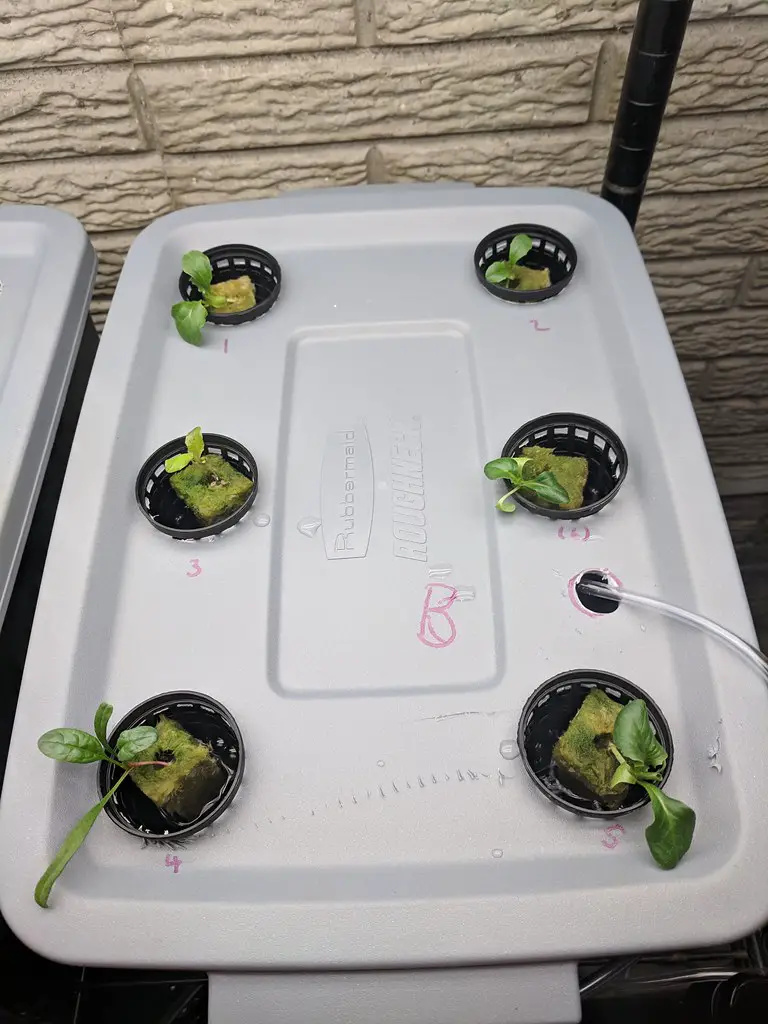
Nutrient Film Technique (NFT) Systems
Pre-designed channels deliver nutrients directly to the roots via a reservoir.
NFT allows for water to easily be recycled instead of completely submerging the entire root system.
When designing a nutrient film technique hydroponic system, you will need to use smaller plants, especially since the channels are small.
Pros:
- Beneficial for plants with smaller roots
Cons:
- Not ideal for larger plants
Wick
Wick systems are ideal for beginners as they don’t require any pumps, electricity, or aerators.
In the wick system, you place your plants into a porous growing medium. The best growing mediums for this system are perlite, sand, or vermiculite mix.
Then, you place nylon wicks that are dipped in the nutrient solution around the roots.
The wicks pull the nutrient solution into the growing medium, allowing the plants to have the nutrients transferred to them.
Pros:
- Simple and easy to design
- No pumps or moving parts are needed
Cons:
- Nutrients may not distribute as evenly as needed
- Not suitable for larger plants
Ebb and Flow (Flood and Drain) Systems
Ebb and flow systems are also known as flood and drain. Ebb and flow are popular because of how easy it is to design and maintain.
Within this system, the plants are inside a growing bed containing a growing medium such as vermiculite, peat moss, or rock wool cubes.
The ebb and flow system will flood the growing bed with the nutrient-rich solution, and then after a certain period, it will drain the water back to the reservoir.
The key to healthy growth with this system is the right amount of water and the right amount of time so that the plants don’t drown and have enough time to absorb the nutrients.
Pros:
- Ideal for root vegetables
- Easy to maintain
Cons:
- Can require a large amount of space
Drip Systems
Drip systems can either be created at a large or small scale, depending on your plant’s needs.
You will be able to have complete control over how much solution each plant receives, and you can easily adjust the flow of the solution.
With this system, you can either have a circulating format that operates with a constant drip or a non-circulating design that allows you to control and adjust the flow.
Pros:
- Unused nutrients are reused.
- Ideal for both large and small plants
- Great for focus on individual plant needs
- Easy to alter if needed
Cons:
- Root diseases are more likely
- The pH level needs to be monitored constantly
Types of Hydroponic Growing Mediums
Just like there are several different types of hydroponic systems, there are other growing mediums that better suit certain plants.
Coco Coir
Coco coir, which may also be called coco peat, is made from the outer husks of the coconut and is usually sold as slabs or blocks.
This medium is highly absorbent, can retain water well, and provides decent root aeration.
Pros:
- Organic
- Sustainable
- It can be purchased compressed, which saves money on shipping.
Cons:
- It can hold a lot of water which may drown plants.
Perlite
Perlite is a volcanic rock mined from lava. They have one of the best oxygen retention levels due to their lightweight porous nature.
This medium is ideal for wick systems as it provides good root aeration, but it does not retain water well. It can be used alone but usually mixed with coco coir or vermiculite to make the medium more sturdy and easier to maintain moisture.
Pros:
- High oxygen retention
Cons
- Need to wear goggles and a mask when handling this product to prevent inhalation
- Too lightweight for hydroponic systems like ebb and flow
Sand
Sand is easy to source and is extremely inexpensive. Sometimes perlite is added to sand to help with aeration. This medium is ideal if you are just getting started and need a cheap alternative for your hydroponic system.
Pros:
- Easy to find
Cons:
- Heavy
- Low water retention
Rockwool
Rockwool is made from melting volcanic rock and spinning it into long fibers that are cooled and pressed into block form.
Pros:
- High water retention
- Easy to obtain and use
Cons:
- Rockwool is nonbiodegradable
- High pH
- It can irritate the skin, lungs, and eyes, so proper personal protection equipment is needed.
Sawdust
Sawdust is an inexpensive medium that can be mixed with sand, perlite, or gravel.
Pros:
- High water absorption and retention
Cons:
- It breaks down quickly and will need to be replaced between each cycle
- Certain sawdust materials such as western red cedar are toxic to plants
- It may become contaminated with salt, so it will need to be flushed with fresh water before use
Clay Pebbles or Pellets
Clay pellets are also known as grow rocks, and they contain tiny air pockets that are ideal for drainage and root aeration. In addition, they are expandable, release no nutrients, and are pH neutral.
Pros:
- Reusable
- Their round shape and porousness create a healthy balance between oxygen and water.
Cons
- It may be heavy if used in an ebb and flow system
- Drains and dries fast, so it may cause roots to dry out
Gravel
Gravel is a medium that you can use for your hydroponic system if you are short on cash or don’t have any other type of medium available.
It works best in drip systems, but they can weigh a lot.
Pros:
- Easy to clean
- Inexpensive
- Drains well
Cons:
- May dry out certain plants
- Heavy
- Not suited for the ebb and flow hydroponic systems.
FAQ
Can Potatoes Be Grown Hydroponically?
Growing potatoes hydroponically is possible but not favorable. Sweet potatoes and other varieties of potatoes require soil to mature healthily.
Potatoes would do much better in an in-ground environment due to their extensive root system versus a hydroponic environment. It also is more cost-effective to grow them in-ground.
If you choose to grow your potatoes hydroponically, you will need to consider putting them in an ebb and flow system. This is because they need plenty of sunlight, about 10-12 hours daily, and flourish best in temperatures of 70 degrees Fahrenheit.
The nutrient solution needs to be at a pH level of 6 or between 5.8-6.2, and the PPM needs to be maintained between 1400-1700.
Can Carrots Be Grown Hydroponically?
Yes, carrots can be grown hydroponically! They require a bit more effort due to their root system, but it is doable.
Carrots prefer a pH level of 6.0-7.0 and PPM of 1120-1400. To grow strong and healthy, they need to be in a cooler temperature of 65 degrees Fahrenheit.
Ebb and flow, wick, and drip systems are ideal for the carrots to grow in, and they require between 12-16 hours of sunlight daily.
Harvest time is about 70 days.
Can Tomatoes Be Grown Hydroponically?
Yes, you can grow tomatoes hydroponically! There are several different varieties, such as Roma or beefsteak tomatoes, that you can grow in your hydroponic system.
Can Mushrooms Be Grown Hydroponically?
Yes, mushrooms can be grown hydroponically! You can start with a mushroom kit with mushroom spores that you can soak in water and place in a dark environment with a temperature of 75-80 degrees Fahrenheit for germination.
For growth, an environment of 90% humidity and heat of 80-85 degrees Fahrenheit is ideal.
Harvesting time is about 3-5 days.
The different type of mushrooms that you can grow hydroponically are:
- Shiitake
- Cinnamon Cap
- Oyster
- Maitake
- Button
Rockwool and coco coir mediums work best for growing mushrooms.
Recap
As you can see, there are so many different types of fruit, vegetables, and root vegetables you can grow! And the best type for you is going to be a definite mix of how much experience you have and your favorite hydroponic setup!
However, no matter which one you choose you’ll definitely be able to grow some great, tasty crops! So make sure you experiment and see what great plants you can have!

